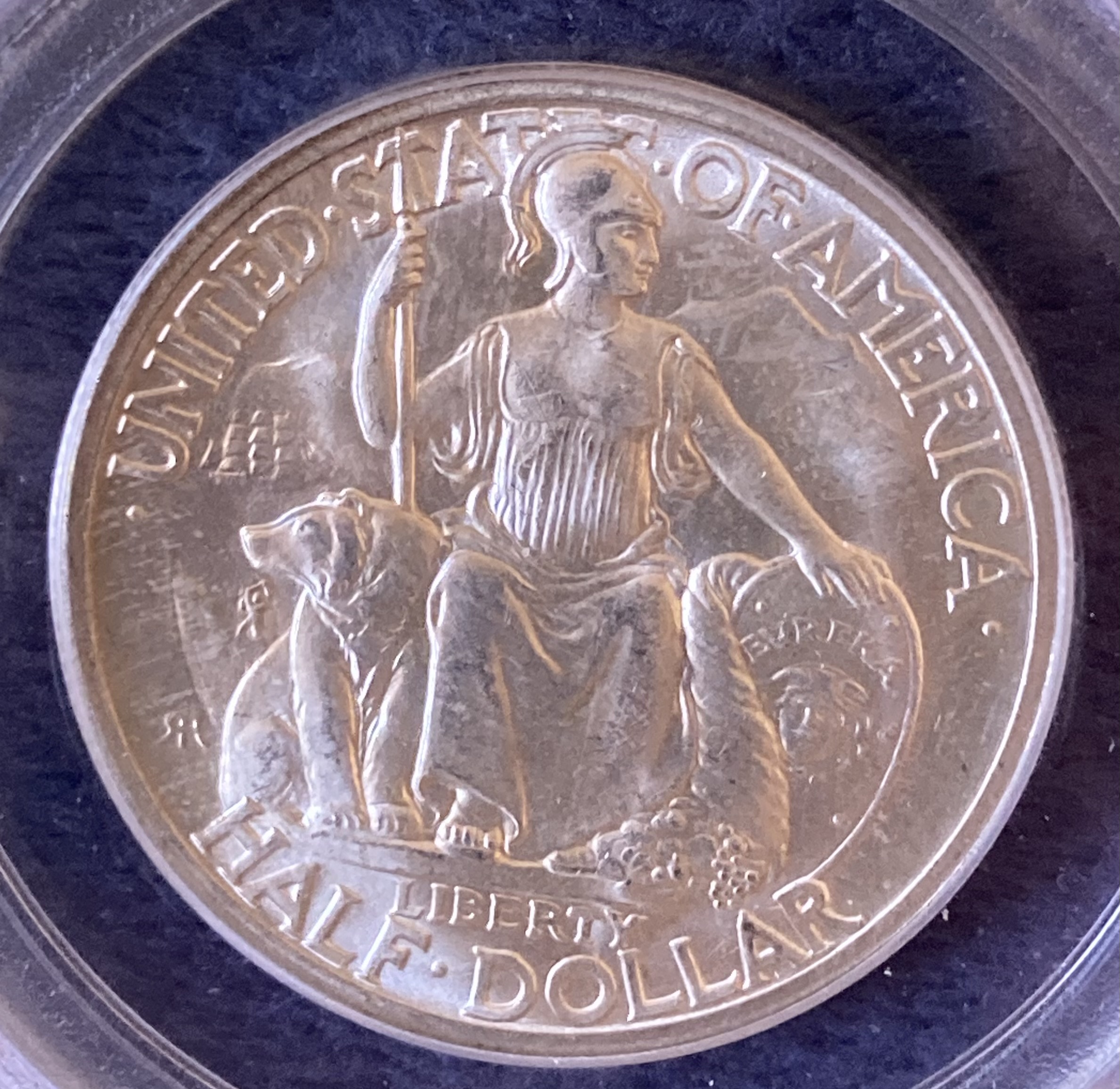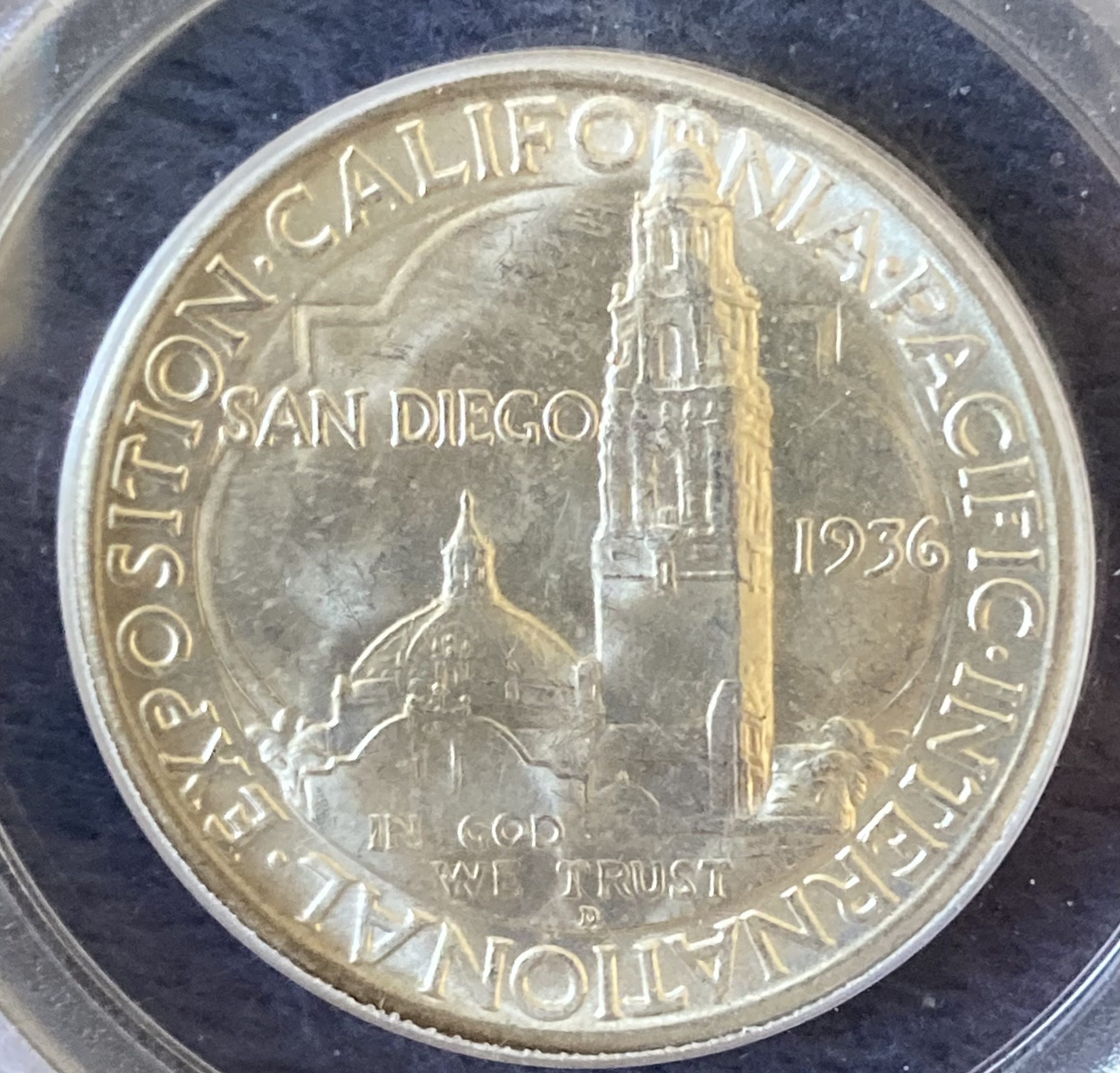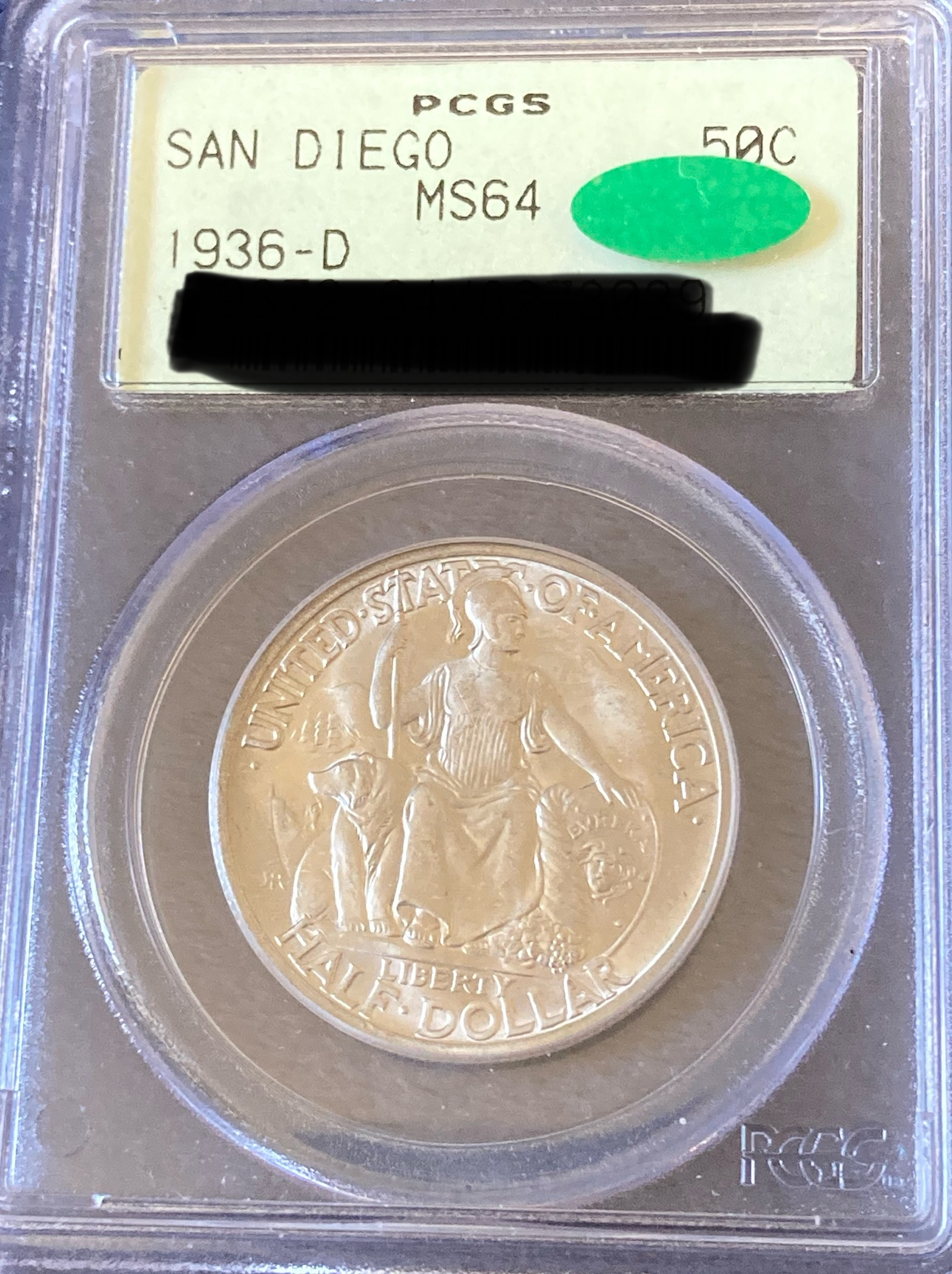Afternoon everyone …..
I’ve come across a few of these so far in my search through some boxes from my private security place. This is my most recent find. It’s a 1936 commemorative SanDiego silver half dollar. It’s been graded by PCGS as an MS64. But it also has a third party CAC sticker as well, which supposedly makes it worth more.
This is a mid ranged cost coin of the series. It’s not one of the more expensive, but it’s by no means cheap. The 1936 is a harder version to find than the 1935, because there are only 30,000 examples.
If you read below you will get the entire story and specs of the coin.
The California Pacific International Exposition half dollar, sometimes called the California Pacific half dollar or the San Diego half dollar, is a commemorative fifty-cent piece struck by the United States Bureau of the Mint in 1935 and 1936. Robert I. Aitken designed the coin. Its obverse depicts Minerva and other elements of the Seal of California; the reverse shows buildings from the California Pacific International Exposition (held 1935–1936), which the coin was issued to honor.
California Pacific International Exposition half dollar
United States
Value
50 cents (0.50 US dollars)
Mass
12.5 g
Diameter
30.61 mm (1.20 in)
Thickness
2.15 mm (0.08 in)
Edge
Reeded
Composition
90.0% silver
10.0% copper
Silver
0.36169 troy oz
Years of minting
1935–1936
Mintage
1935-S: 250,132 including 132 pieces for the Assay Commission, 180,000 melted
1936-D: 180,092 including 92 assay coins, 150,000 melted
Mint marks
S (all 1935 coins), D (all 1936 coins). Beneath the letter T beginning TRUST on the reverse
Obverse
Design
Minerva and other elements of the Seal of California
Designer
Robert I. Aitken
Design date
1935
Reverse
Design
California Tower and Chapel of St. Francis, Balboa Park, San Diego
Designer
Robert I. Aitken
Design date
1935
Legislation for the half dollar moved through Congress without opposition in early 1935, and Aitken was hired to design it. Once his creation was approved, the San Francisco Mint produced 250,000 coins, but expected sales did not materialize. Left with more than 180,000 pieces they could not sell, the Exposition Commission went back to Congress for further legislation so it could return the unsold pieces and have new coins, dated 1936, hoping for greater sales in the second year of the fair's run. Although the commission was successful in getting the legislation passed, it was less so in selling the coins, and 150,000 1936-dated pieces were returned to the Mint. The coins, of either date, sell in the low hundreds of dollars today.



You received an upvote of 91% from Precious the Silver Mermaid!
Thank you for contributing more great content to the #SilverGoldStackers tag. You have created a Precious Gem!
That's a nice coin, MS64! I don't think I have one of those. Very cool!
Nice. That's one I've never seen before.
!LUV
!PIZZATotally nice, @silverd510 !!!
(6/10) sent you LUV. | tools | discord | community | HiveWiki | <>< daily@silverd510, @silversaver888
$PIZZA slices delivered:
(4/15) @silversaver888 tipped @silverd510
That one’s a beauty D — 🤩🤩🤩
Thanks brother….
Nice classic commemorative. Still working on my collection. Don't have this one yet. Still working on picking up the 1921 Missouri one.
Good luck
Thanks. Need it.